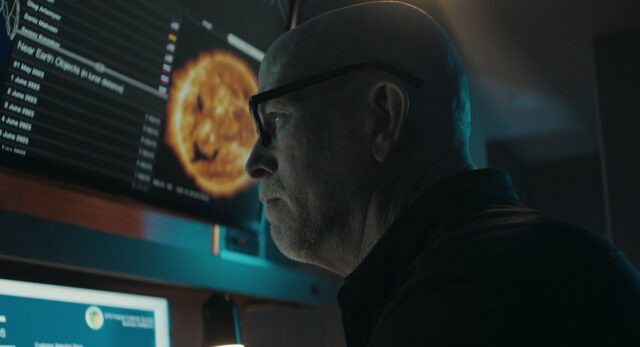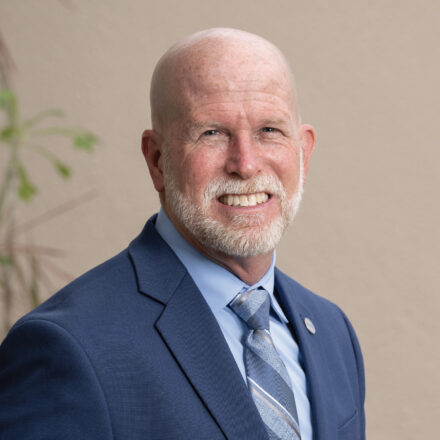
“This might sound a bit sappy: I’ve been working on rocket launches for 30 years, and I still get goosebumps every time I drive out to Cape Canaveral,” Larry Ross says. As a manager on Dell Technologies’ Federal Support Resolution team, Ross is responsible for ensuring that customers’ technical needs are met, and he isn’t afraid to get his hands dirty—literally. Ross started his career at the famed Kennedy Space Center as a janitor before moving into IT work supporting various launches, eventually coming to Dell to interface with clients, diagnose and repair server equipment problems, and dispatch his team members to service the technology that is responsible for getting people into space.
“[Space flight] has always been something that’s captivated me,” Ross says. “I remember watching the Apollo launch with my parents at 7 years old, and now to have a career that allows me to be a part of this process…it’s awesome.”
NASA has been partnering with Dell for over a decade, but it was only recently that Ross’ team was brought on-site to lead wet-dress rehearsals, or practice runs in the run-up to the highly-anticipated Artemis II launch. “We actually go all the way through the countdown and stop within a few seconds of launch to make sure that all the systems are working. You can imagine how important it is that we identify any equipment issues ahead of time; these rehearsals give us the chance to engage our team so that we can get any problems resolved,” he says.
Although lift-off won’t happen until late 2024, NASA’s first moon mission with astronauts aboard in 50 years is already making headlines. The Artemis II capsule will take four astronauts on a 10-day journey 1,800 miles above Earth, circle the moon, and then land in the Pacific Ocean. Those astronauts—including pilot Victor J. Glover, Jr., the first Black man assigned as a crew member on the International Space Station, and mission specialist Christina Hammock Koch, who holds the record for the longest spaceflight by a woman—were announced in early April and represent NASA’s renewed investment in moon missions.
As New York Times science reporter Kenneth Chang writes, “If Artemis II is successful, it will set up the biggest event in human spaceflight since the 1970s: Artemis III, a mission that will send astronauts to the lunar surface.” In addition to collecting data on water and ice on the moon, the Artemis project will help to develop the science and technology needed for occupied missions to Mars, currently projected for 2040.
The equipment that Dell provides performs extremely well across all of the specializations and data points that are needed to monitor and manage launches.” – Larry Ross, technical account manager at Dell Federal Support Resolution Team
Powering space flight

At the center of all of this is Kennedy Space Center in Cape Canaveral, Florida. Since the first Apollo mission in the late 1960s, the spaceport has been NASA’s primary launch center for human spaceflight, employing over 12,000 people, including contracted employees like Ross and his Dell team. Kennedy’s launch control center is powered by more than 1,000 servers that provide real-time data and diagnostics directly to space crafts like Artemis II by running flight software applications and monitoring system health and capabilities. Those servers, in turn, are powered by Dell PowerEdge.
“This is why our partnership has been successful for so long,” says Ross. “The equipment that Dell provides performs extremely well across all of the specializations and data points that are needed to monitor and manage launches.” Fans of the 2016 film “Hidden Figures” may remember scenes of NASA’s larger-than-life chalkboards and manual calculations necessary ahead of astronaut John Glenn’s orbit of the Earth in 1962. That impressive feat of mathematics and teamwork was a precursor to the number of insights available to launch specialists in 2023, as servers process 185,000 critical data points across hundreds of workstations in the very same rooms where scientists launched the Apollo missions.
Ross’ team provides additional value with their flexibility; because of the specialized nature of the programs and data that NASA needs, some of Dell’s off-the-shelf applications need to be rewritten to work effectively for launch purposes. “As we’ve revamped these products, we’ve realized that we’re actually improving them,” Ross says. “Those improvements have implications for both NASA and other customers that might be able to use our products in fresh ways.” This pairing of real-time innovation and technical savvy underlines the impact that Ross and his team bring to their partnership, amplified by the scale at which this flexibility is felt.
Innovation: mission critical

Among leading information technology companies, only 18% of businesses were classified as “innovation adopters and leaders” according to Dell’s 2023 Innovation Index. These groups are twice as likely to advance their organizational transformations in periods of uncertainty — and NASA is in the business of transformational work. From its formation in 1958, the agency leapt into the Space Race—the United States’ competition with Russia to be the first to achieve spaceflight—and was bold in its innovation, iterating on failed projects to achieve success within accelerated timelines. By collaborating with scientists, mathematicians and physicists with varied educational and social backgrounds, the organization achieved fantastic results, culminating in the flight of Apollo 11 in 1969.
Through its partnership with Dell, NASA is continuing its tradition of building innovative processes. Each time Ross and his team of technical support employees find a new use case for an existing product or repurpose a piece of equipment to better suit NASA’s needs, they are enhancing the maturity level of the organization as well as the tools they service. By investing in Dell tech and teams like Ross’, NASA will accomplish another milestone with the Artemis launch, setting in motion a new age of space exploration.
Ross doesn’t underestimate the significance of the team’s work. “The day-to-day can be challenging,” he admits. “I’ve seen it happen on other accounts; someone could easily get burnout. But our team has such passion for the program that we can overlook some of the challenges. We have a great camaraderie that allows us to lean on each other. Everyone knows that we’re working towards the same goal.”
He recommends that leaders ensure that each contributor feels a sense of ownership over their projects. This kind of shared investment allows companies greater freedom to think of their next great idea, whether for an internal initiative or the next flight to the moon. “We treat every piece of work like it’s our own, because we know that, ultimately, the mission is what’s most important.”
Innovators at Work is a series on Perspectives profiling Dell team members who drive innovation by combining ideas and technology to create life-shaping impact. The series is inspired by Dell’s Innovation Index, which provides insight on what global decision makers are doing to create innovation resilience in turbulent times.

